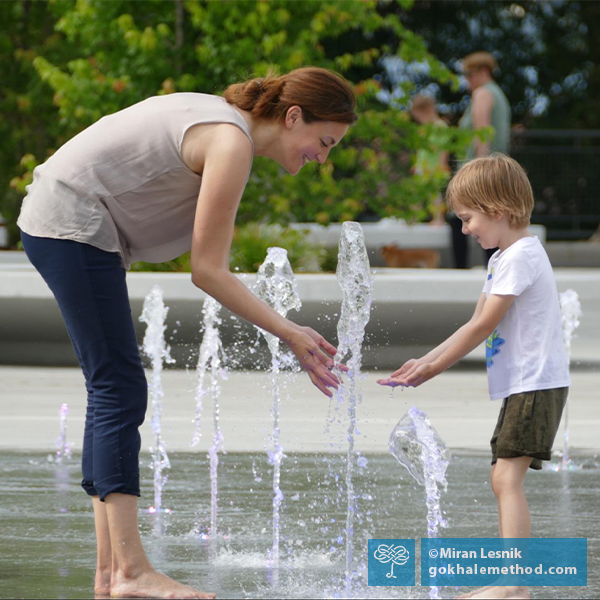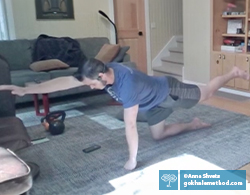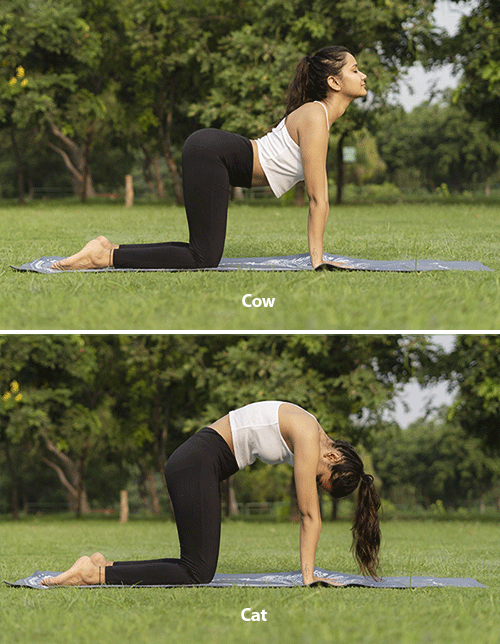For many people, their first encounter with back pain is when they become parents. That was certainly true in my case, although, to be factually correct, I was a mom-to-be in the ninth month of my first pregnancy when a herniated disc brought me, literally, to my knees.
What’s the Best Exercise to Strengthen Your Back? Part 1: Bird Dog
Have you been taught cobra pose or locust pose to strengthen your back? It is a common practice to try to strengthen the back with back bends, focusing on the long back extensors on either side of the spine. This approach is used by the McKenzie Method, many yoga teachers, and physical therapists.
In the Gokhale Method® we prefer to strengthen the back by working with the muscles which collectively stabilize the trunk. Our focus is on maintaining a healthy J-spine baseline rather than backbending.
Back Spasm Remedies
You’ve tweaked your back. It may be a stabbing pain that catches with certain movements, it may be that you cannot straighten up, or maybe it’s an electrical, nervy sensation in your buttock.
Home Exercises Part 3: Cat-Cow
This is our third blog post in the series where we put popular exercises under scrutiny to examine how they stack up—or not—against the principles of healthy posture. Here we are looking at “Cat-Cow,” a common exercise for mobilizing the spine.
Cow is one of the “holy cows” of conventional exercise. Done on all fours, it puts the spine into extension (swaying). It is paired with Cat , which puts the spine into flexion (rounding). Alternating between these postures is widely considered to be a good or even necessary exercise for mobilizing the spine.
Upgrade Your Downward-Facing Dog with the Gokhale Method and SpineTracker™
Studying and teaching yoga has been part of my life for several years. However, after learning the Gokhale Method, I approached the well-known yoga posture “downward-facing dog” (Adho Mukha Svanasana) in a new way.
Hip-hinging with my even spinal groove visible — GOOD! Image courtesy Cecily Frederick.
In the Gokhale Method Foundations Course, I learned how to hip-hinge and keep my spine from flexing when bending. I wanted to maintain about the same spinal shape in my “downward-facing dog” pose as I had learned when hip-hinging. This spinal shape, with an even spinal groove from the lower to the upper back, meant that my intervertebral discs, nerve roots and spinal ligaments would be protected




